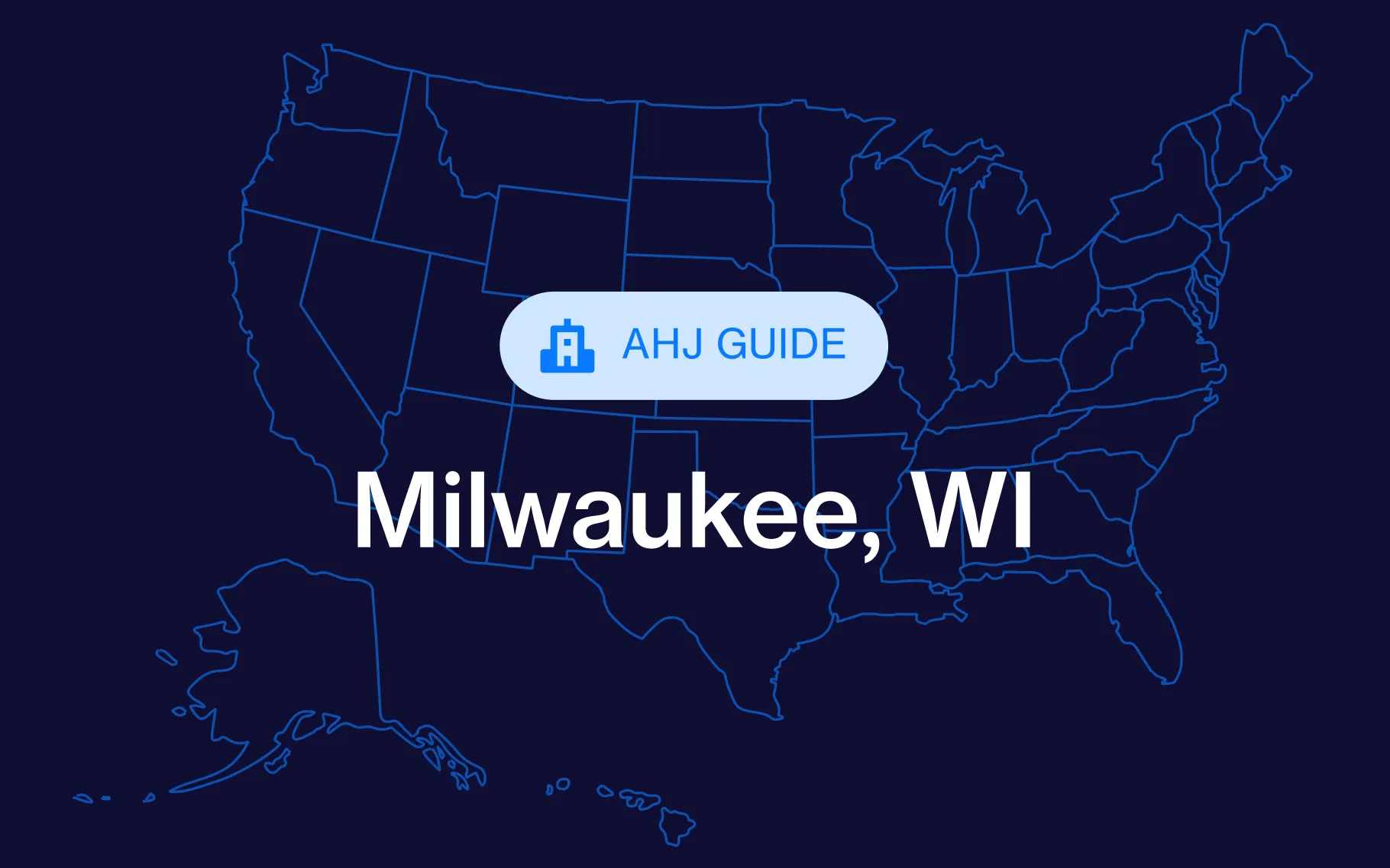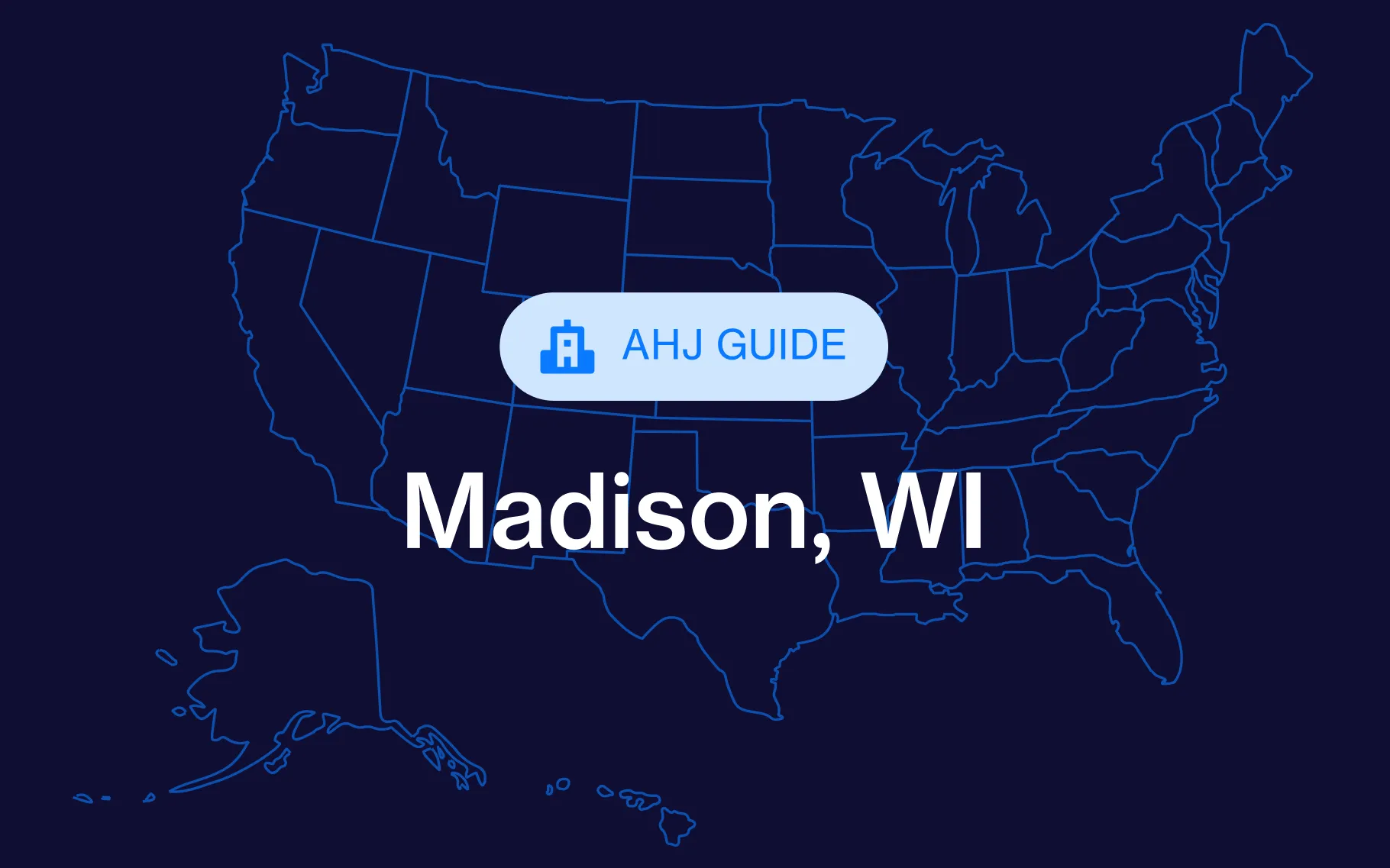Wisconsin doesn’t have a one-size-fits-all permitting process. While the state provides baseline codes and oversight, building permits are issued by local municipalities, with rules, fees, and timelines that vary city by city.
To avoid surprises, you need to understand both what state law requires and what your particular county or city expects.
Below is an overview of how to navigate the Wisconsin building permit process: who issues permits, when one is needed, what must be submitted, typical costs, unique considerations in the state, and a step-by-step for getting your permit.
Who issues building permits in Wisconsin?
Most building permits in Wisconsin are issued by city, town, or county building or inspection departments. For example, the City of Mequon handles residential and commercial building permits through its Community Development Department.
The Wisconsin Department of Safety and Professional Services (DSPS) plays a regulatory role: companies must meet state credentialing requirements, uniform dwelling code rules apply statewide, and many municipalities interface with DSPS via its electronic permitting systems (per Act 211).
Local municipalities enforce the state building, plumbing, electrical, energy, and safety codes, but local inspectors and plan reviewers do the work.
When do you need a building permit in Wisconsin?
Most construction, structural change, or system work will need a permit in Wisconsin.
Some common triggers include:
- New residential or commercial construction
- Additions, remodels, or structural alterations (e.g. load-bearing wall removal or foundation work)
- Electrical, plumbing, or HVAC installations or upgrades
- Decks, garages, accessory buildings, porches, fencing (depending on size and location)
- Changes in occupancy or major renovations
There are exceptions for minor work. For example, many municipalities don’t require permits for cosmetic changes like painting, certain window replacements, basic floor or wall finishes, or fences under a given height. Always check with local ordinances.
Wisconsin building permit requirements
When you apply for a building permit in Wisconsin, expect to submit:
- A completed permit application specific to your municipality
- Construction drawings, including floor plans, elevations, structural details, and foundation plans
- A site survey or plat plan showing lot lines, setbacks, existing buildings, utilities, drainage, etc.
- Energy performance documentation or heat/energy loss calculations
- Credentials for contractors, as many projects require that your contractor or builder have a valid credential from DSPS.
- Erosion control or stormwater management plans when ground disturbance is involved or required by local or state law.
- Any additional approvals required by zoning, health departments (for septic/wells), or other local oversight like environmental review if near wetlands or shorelines
Wisconsin building permit costs
Wisconsin building permit fees vary widely depending on the municipality, size, project type, and complexity.
Some examples:
- In Menomonee Falls, residential permits (one- or two-family homes and additions/garages) cost around $0.35 per square foot with minimum fees for smaller projects. Commercial and non-residential work is calculated differently.
- The Town of Lawrence’s building permit fee schedule shows that the total cost for single-family dwellings is bundled to include inspection, administrative fees, the state building seal, erosion control, and more. For example, a typical single-family home under certain size thresholds carries combined fees of about $1,520.
- Smaller jurisdictions like Combined Locks publish flat minimum fees for specific trade permits, and more detailed valuation scales for full building permits.
Unique considerations when permitting in Wisconsin
Uniform Dwelling Code & State Seal
One- and two-family dwellings are subject to the UDC, which sets state minimums. Many jurisdictions require the Wisconsin Uniform Building Permit Seal, a state administrative requirement.
Act 211 compliance
2015 Act 211 standardizes how municipalities process UDC permits (including online submissions) and mandates the use of a standard permit application form unless a municipality’s own form is approved.
Contractor credentials
For residential and certain trade work, you often need a Dwelling Contractor & Qualifier or similar certification from DSPS. This includes continuing education requirements and renewal cycles.
Stormwater, erosion control, and environmental oversight
In many areas, especially for larger lots or waterfront/shoreline work, these plans are required, and review cycles can add time.
How to get a building permit in Wisconsin
- Identify the local authority
Determine which city or county department you’ll submit to. That authority enforces both local ordinances and state codes. - Check permit requirement
Verify whether your project needs a permit. Identify any exemptions based on size, occupancy, trade, or project type. - Prepare full documentation
Include construction drawings, site survey or plat plan, energy or heat/energy loss worksheets, erosion control/stormwater plans if needed, and contractor credentials. - Submit the application
Many municipalities accept (or even require) electronic submissions, particularly for UDC permits via the state’s system. Others allow paper or mixed formats. - Pay fees
Budget for plan review, inspection, permit issuance, state seal, and any extra charges. - Address review comments
The local building department, zoning, health, environmental, or stormwater departments may return comments or requests for corrections. Respond promptly to avoid delays.
- Obtain the permit & begin construction
After approval and payment, your permit is issued. Ensure you follow inspection schedules throughout the build.







